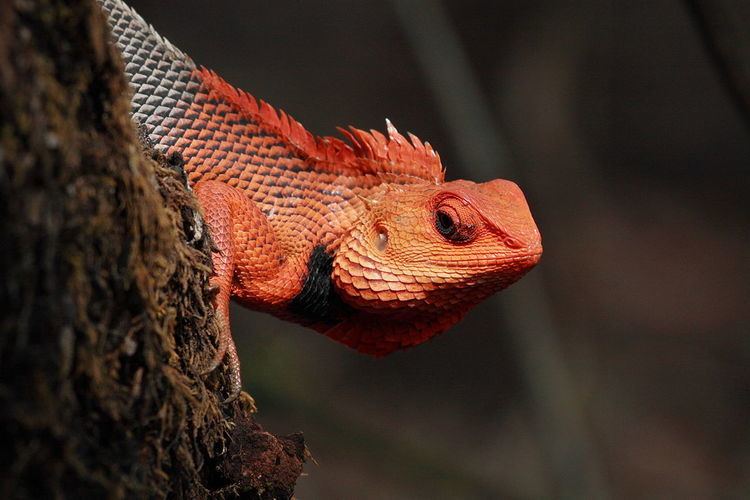Type Natural Phone 02345 226 318 | Website mahaforest.nic.in Area 317.7 km² Established May 2004 | |
 | ||
Address Taluka Shirala, Distrcit Sangli, Mandur, Maharashtra 415415 Hours Open today · 6AM–6PMFriday6AM–6PMSaturday6AM–6PMSunday6AM–6PMMondayClosedTuesday6AM–6PMWednesday6AM–6PMThursday6AM–6PM Similar The Jungle Resort Amba, The Amba Resort, HORNBILL DELUXE HILL RES, Pawankhi Resort, O'Nest Home Stay | ||
Chandoli national park sangli new week end destination
Chandoli National Park (Marathi: चांदोली राष्ट्रीय उद्यान) is natural World Heritage Site and 317.67 km2 (122.65 sq mi) National Park spread over Kolhapur and Sangli District, Maharashtra state, India, established in May 2004. Earlier it was a Wildlife Sanctuary declared in 1985.
Contents
- Chandoli national park sangli new week end destination
- Sahyadri Tiger Reserve
- Location
- History
- Geography
- Flora
- Fauna
- Development
- Threats
- Visitor Information
- References
Chandoli Park is notable as the southern portion of the Sahyadri Tiger Reserve, with Koyna Wildlife Sanctuary forming the northern part of the reserve.
Sahyadri Tiger Reserve
The 741.22 km2 (286.19 sq mi) Sahyadri Tiger Reserve, including all of Chandoli National Park and Koyna Wildlife Sanctuary was declared by The National Tiger Conservation Authority as a Project Tiger tiger reserve on May 21, 2007. The Sahyadri Tiger Reserve was then estimated to have nine tigers and 66 leopards.
Location
Chandoli National Park is located near the Chandoli Dam between longitudes 73°40' and 73°53' E and latitudes 17°03' and 17°20'N in Sangli District of Western Maharashtra. It lies between the Koyna Wildlife Sanctuary and Radhanagri Wildlife Sanctuary and forms the southern part of the Sahyadri Tiger Reserve.
History
The historical places of the park include the 17th century Shivaji's Forts, Prachitgad and Bhairavgad, of the Maratha kings Shivaji and his son Sambhaji. Ruins of the Bhavani temples palatial buildings in Prachitigad and Kalavantin vihir depict the ancient glory of the Maratha Empire. Most of the protected area was used an open jail for the "prisoners of war" of the early Imperial Maratha Conquests during Shivaji's rule. Sambhaji used Prachitgad as an observation point and recreational place.
Geography
The park spreads along the crest of the Sahyadri Range of the northern Western Ghats. It forms and protects many perennial water channels, water holes and the Vasant Sagar Reservoir. Elevation of the park ranges from 589–1,044 m (1,932–3,425 ft). . The park receives its water supply from the Warna river and reservoir as well as several other small streams and rivers.
Flat topped mountains, rocky, lateritic plateaus called 'Saddas', almost devoid of vegetation, large boulders and caves are distinctive to the protected areas in the Sahyadri region of the Western Ghats.
Flora
The forest types seen here are a mix of Malabar Coast moist forests and North Western Ghats moist deciduous forests. In the dwarf evergreen forests, some tree species commonly seen here are the anjani ironwood tree, jamun, pisa (angustifolia), fig, Olea (diocia), katak spinous kino tree, nana or Crape myrtle (lanceolata), kinjal, kokum tree and phanasi false kelat (brachiata). Other trees dominating the landscape include asan wood or ain or Indian laurel, amla or Indian gooseberry, umbar or devil fig (hispida) and harra or chebulic myrobalan.
Grasses commonly seen here include bangala or bluestem grass sp., dongari or golden beard grass (fulvus), black spear grass, kalikusli or tangle grass, anjan grass or buffel grass, grader grass or karad or kangaroo grass (quadrivalvis) and grasses belonging to Poaceae family, like saphet-kusli or Aristida funiculata. Insectivorous plant species like sundews and bladderworts sp. are also found in this protected area.
Fauna
Nearly 23 species of mammals, 122 species of birds, 20 species of amphibians and reptiles are known to be resident in the forests of Chandoli.
Bengal tigers, Indian leopards, Indian bison, leopard cats, sloth bears and Indian giant squirrels are quite conspicuous here.
Many prey species of ungulates such as barking deer, sambar deer, mouse deer and blackbuck are present. A census carried out in 2002 by the Forest Department showed a rise in the number of tigers, leopards, gaur, barking deer, mouse deer, sloth bears and blackbuck. A similar census carried out in 2004 showed a rise in gaur population in the Kolhapur Wildlife Division from 88 to 243.
Development
Work undertaken for habitat improvement and development in the Chandoli National Park include removal of invasive species, soil conservation and water conservation, vaccination of cattle, research, fire prevention, providing salt licks, demarcation of boundary, erection of watch towers, maintenance of nature trails, desalting water holes, development of grasslands, and procurement of wireless two-way radios.
Threats
The Maharashtra government has plans to set up the Karadi-Bhogiv hydro-electric project in the catchment area of the Warna Dam that is expected to use up 6.78 km2 (2.62 sq mi) of forest land. On a positive note, nearly 7,894 people and a significant cattle population resident on 84.29 km2 (32.54 sq mi) of land in 32 villages within the park. These villages have been successfully relocated to areas outside the park. This measure has helped to preserve and regenerate some of the vegetation in this protected area.
Visitor Information
Scenic places like Kandhardoh and Kandhardoh Falls, Tanali falls and Vasant Sagar Reservoir are places of tourist importance in the park. Scenic points like Kokan darshan, Zolambi sada and the virgin forest of Rundiv add to the recreation value.
Best time to visit is October to February. June to September have heavy rainfall over 3,500 mm (140 in).
Miraj junction is well connected to important cities by express and superfast trains. You can alight at Miraj junction or Sangli railway stations and take a private car to Chandoli National Park.
You can reach Chandoli by taking National Highway NH4.
